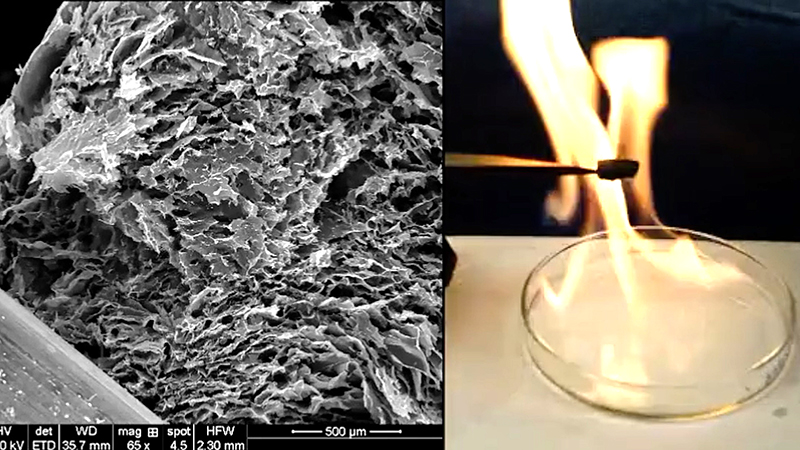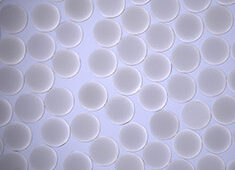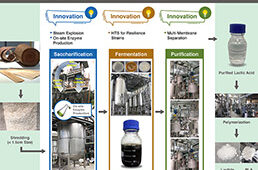
The properties of a new light-weight, high-strength, flame-resistant and elastic metamaterial give it a potential use in a bevy of applications.
Researchers from Purdue University in collaboration with teams from Lanzhou University and the Harbin Institute of Technology in China and the U.S. Air Force Research Laboratory believe that the metamaterial combining nanolayers of aluminum oxide and graphene can be used in several industries including building construction and aerospace.
“This material is lighter than a feather,” Gary Cheng, an associate professor in the School of Industrial Engineering at Purdue University, said in a statement. “The density is really low. It has a very high strength-to-weight ratio.”
“The outstanding properties of today’s ceramic-based components have been used to enable many multifunctional applications, including thermal protective skins, intelligent sensors, electromagnetic wave absorption and anticorrosion coatings,” Cheng added.
The metamaterial has a honeycomb microstructure to provide a super-elasticity and structural robustness. The composite material is comprised of interconnected cells of graphene sandwiched between ceramic layers. The graphene scaffold—called an aerogel—is chemically bonded with ceramic layers using a process called atomic layer deposition.
“We carefully control the geometry of this graphene aerogel,” Cheng said. “And then we deposit very thin layers of the ceramic.”
“The mechanical property of this aerogel is multifunctional, which is very important,” he added. “This work has the potential of making graphene a more functional material.”
Graphene normally degrades when exposed to high temperature but the ceramic aluminum oxide imparts high heat tolerance and flame-resistant properties that can be useful as a heat shield for aircrafts.
Some of the common issues with ceramic-based materials is that they have several fundamental bottlenecks that prevent their ubiquitous use as functional or structural elements.
“Here, we report a multifunctional ceramic-graphene metamaterial with microstructure-derived super-elasticity and structural robustness,” Cheng said. “We achieved this by designing a hierarchical honeycomb microstructure assembled with multi-nanolayer cellular walls serving as basic elastic units.
“This metamaterial demonstrates a sequence of multifunctional properties simultaneously that have not been reported for ceramics and ceramics–matrix–composite structures,” he added.
The materials properties—including its light-weight, high-strength and shock absorbing nature—could allow the composite to act as a good substrate material for flexible electronic devices and large strain sensors.
It also has a high electrical conductivity and is an excellent thermal insulator, making it useful as a flame-retardant, thermally insulating coating, as well as for sensors and devices that convert heat into electricity.
The process can possibly be scaled up for industrial manufacturing and future work will include research to enhance the material’s properties, possibly by changing its crystalline structure and scaling up the process for manufacturing and controlling the microstructure to tune material properties.




